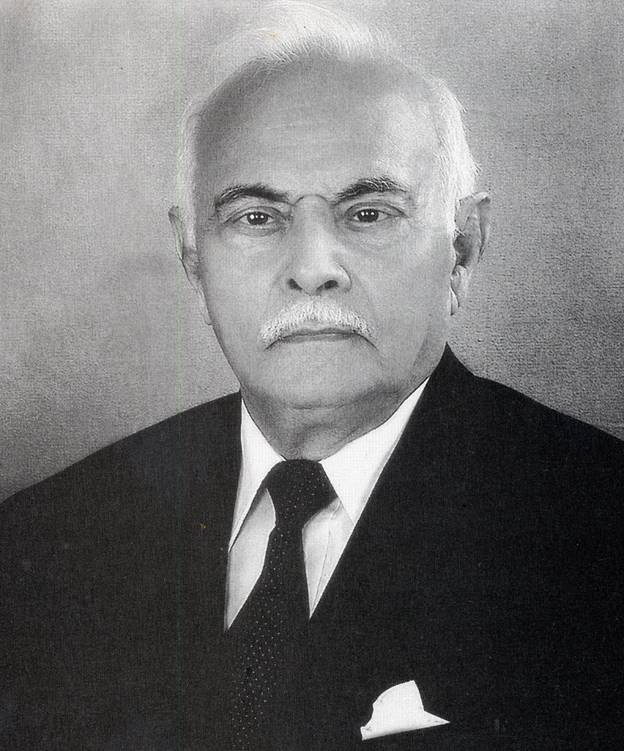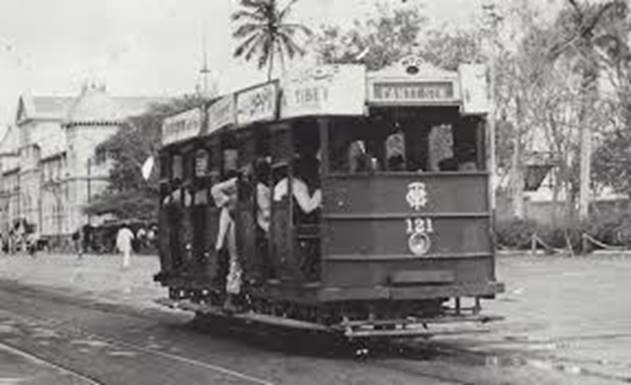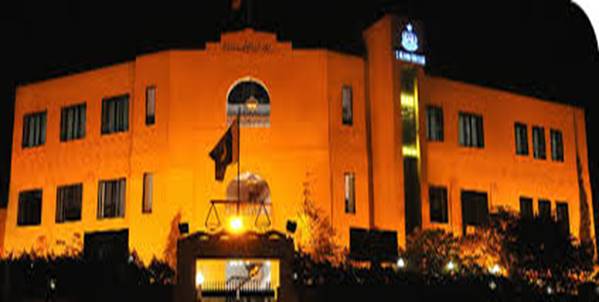
As we age, we lose many relatives and friends who take away precious memories with them. This irreversible phenomenon brings into focus life's fragility and fleeting nature. It also tells us that we should cherish and value them while they are alive
A Celebrity No Longer with Us
By Dr Syed Amir
Bethesda, MD

Once in a while, we meet a person so noble and so urbane that we wish we had met him sooner and known him more closely before he left this earth. Mr Obaidur Rehman Marhom, a lawyer from Pakistan who settled in the twilight years of his life in the Greater Washington area, was one such person. He died two years ago.
Mr Rehman personified the composite culture, delightful language, and courteous manners of old, storied Lucknow, even though he had migrated from that city as a young man and spent most of his adult life in Karachi practicing law. During his stay in the DC area, he made many friends, became the star of most literary societies, actively participated in poetry readings, and reached out to the younger members of the South Asian community to mentor them to develop into polished speakers.
During his stay in Virginia, Rehman Saheb became closely associated with Halqa e Arbab e Zooq, a literary group founded by several expatriates from Pakistan who retained an interest in the literary heritage of their native country. The Society met once a month, and attendees were invited to talk about their favorite Urdu author or poet. The founder, Kifayat Ullah Rehmani, an engineer by profession and a close friend of Rehman Saheb, passed away long ago, but others left behind kept the Association and the tradition alive and going. Today, it still meets and is managed by Shah Fazal Abbas,
The other literary organization that Rehman Saheb supported was the Society of Urdu Literature (SOUL). This was founded and organized by the veteran journalist, author, and broadcaster, the late Mr Abul Hasan Naghmi, another luminary in the literary horizon of Washington, DC. The two were close friends, and Rehman Saheb actively participated in Soul programs. Once, during Ramzan and Eid, Rehman Saheb presented a superb description of how Ramzan and Eid were celebrated a century ago in Sandeela, his birthplace in Awadh. It was a fascinating story that enthralled many young people who had never experienced such festivals.
Those of us who met Rehman Saheb in the Washington area had no inkling of the illustrious career he had led previously in Pakistan as a prominent lawyer and political activist. Even as a young student in Lucknow, he actively participated in the Pakistan movement, which was roiling the Muslim Community in North India at the time. Rehman Saheb had moved with his family from Sandila to Lucknow at a very young age. The cultural and moral values and mores he imbibed there remained with him for the rest of his life.
As a young student, he wholeheartedly threw himself into the Pakistani movement. His account of meeting Raja Saheb of Mahmudabad is especially memorable. Mohammad Amir Ahmed Khan was a wealthy landlord of UP who was very active in national politics, and his grand mansion in Lucknow was the epicenter of Muslim politics, where many fateful decisions about Muslims were made. Rehman Saheb described how amazed he was to find how simple and unassuming Raja Saheb was in his attire and demeanor. He looked not like a Raja but more like a Qalandar or Durvesh. Raja Saheb died at 58 in London, where he was the director of the Islamic Cultural Center.

Most Karachi residents alive today will not recognize it. The town ended at the Jail, connected by green, old-fashioned Mohammed Ali Tramway Buses to the Tower. The charge for this trip was six paisas (extinct now)
In 1949, Rehman Saheb emigrated to Pakistan in the aftermath of the turmoil caused by the partition. Pakistan was a young country going through birth pangs. Rehman Saheb’s description of Karachi, the then-capital city, sounds incredible now. Most Karachi residents alive today will not recognize it. The town ended at the Jail, connected by green, old-fashioned Mohammed Ali Tramway Buses to the Tower. The charge for this trip was six paisas (extinct now). The goodwill for Muhajirs was so high that Pir Illahi Bux gifted his land to build housing units for them, which is what the Pir Colony is today. The completed two-bedroom houses were sold for four or five thousand rupees. There were no water or power facilities at the time.
Nearby were the Martin Road quarters under construction for government employees; these dwellings also had no electricity or running water, and tankers were used to deliver water. Rehman Saheb found refuge with some relations in one of the Martin Quarters houses. Considering what others had, he said the modest accommodation felt like a palace. Beyond Martin Road, there was nothing except wild thorny bushes, farms, and huts for farmers and their guard dogs. The old Numaish Ground was packed with Jaggis and tents of impoverished immigrants, with only one shared toilet and no lights. Amidst this desolation stood a single Shamiana on a hilltop and a small banner, identifying it as the final resting place of Quaid-i-Azam. The city limits ended at Teen Hutti, which was marked by the shallow Lyari River with no bridge. The people just crossed it on foot. The current big population clusters of Nazimabad, Gulshan e Iqbal, and others were a long way in the future.
Rehman Saheb came to Karachi with few means to support himself. He had not completed his education in Lucknow and had only Rs. 300 in his pocket to start life in a new country. He completed his graduation from the Government College Lahore, where his sister and brother-in-law had settled. He loved Lahore and enjoyed his stay there. It was soon after partition, and he described in poignant details the horrors and signs of destruction that the beautiful, ancient city had suffered. Burnt buildings and debris were scattered everywhere, and although the town was recovering, it had signs of death and destruction still visible at landmark sites, such as Shah Alimi Gate.
He returned to Karachi to seek employment and fulfill his law degree dream. With the help of a kind person he barely knew, he secured the position of an upper-division clerk, which was a great comfort to him. With meager resources, he enrolled in the SM Law College and became a lawyer. In pursuing the law practice, Rehman Saheb

SM Law College, Karachi
found his real calling. As an advocate, he took on the cases of clients who were rich and powerful and had courtroom battles with Pakistan’s most famous and iconic lawyers. Rehman Saheb also served for many years as a professor and principal of the SM Law College.
As is often the case with eminent lawyers, he started taking part in the country's politics, especially the lawyer’s movement designed to protest the military governments' autocratic actions impinging on the judiciary's freedom. He was elected as the secretary of the Muslim League and president of the Bar Associations. As a successful lawyer, he climbed to the top political circles of the provincial and central leadership. He became a prominent member of Asghar Khan’s Tehrik-e-Istiqlal. Twice, he was arrested and went to jail. He described his time in jail as a tranquil interlude when he could meditate. After retirement, he reluctantly moved to the US, as all his children were here already, and insisted their parents did the same.
A self-effacing man, he never talked about himself much. Few of us knew that besides being a successful lawyer, he was a well-recognized writer who had developed an easy writing style and authored several books, both professional and biographical, and those related to contemporary Pakistan politics.
His most interesting nonlegal book is his memoir, Yad Hay Zara Zara, which traces his childhood in Sandella, a small town near Luckow, to his retirement and migration to Virginia. Rehman Saheb had a phenomenal memory and recorded minute details of his early life in his book. He fondly recalls Sandila, a town of green fields and dense mango orchards. The book chapters are embellished with beautiful Urdu verses at appropriate places.
As we age, we lose many relatives and friends who take away precious memories with them. This irreversible phenomenon brings into focus life's fragility and fleeting nature. It also tells us that we should cherish and value them while they are alive.
(Dr Syed Amir is a former Assistant Professor, Harvard Medical School, and a health science administrator, US National Institutes of Health)

